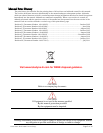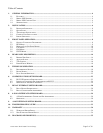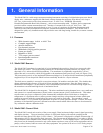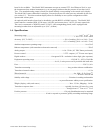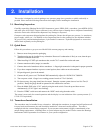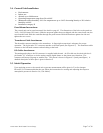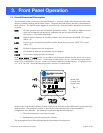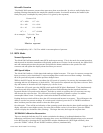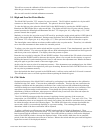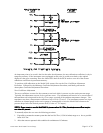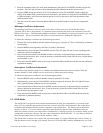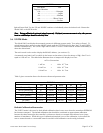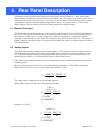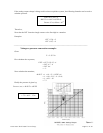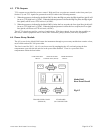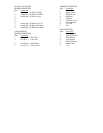149-072011 Model 2002 Vacuum Gauge Page 10 of 38
This will not correct the calibration if the tube has become contaminated or damaged. This reset will not
affect the gas selection, units or setpoints.
Also see unit’s mode for default calibration restoration.
3.3. High and Low Set Point Modes
The Model 2002 provides TTL outputs for process control. The I/O cable is attached via a 9-pin sub-D
connector to the rear panel of the control unit. The pinout is shown in Figure 4.2.
To view the high set point, place the Model 2002 in the HIGH mode by pressing the MODE switch to
illuminate the HIGH light and no other mode light. The display will show the set point selected. During
normal operation the alarm light will illuminate and the TTL output (pin # 3) will go high (+5 V) if the
pressure exceeds the set point.
Similarly, to view the low set point access LOW mode by pressing the mode switch until the LOW light is lit
and no other mode light is illuminated. During normal operation, the LOW light will illuminate and the
LOW alarm TTL output (pin # 4) will go high (+5 V) if the pressure becomes less than the set point.
The alarm lights cannot indicate an alarm condition while in the set point modes. Therefore, it is advisable
not to leave the instrument in these modes for extended periods.
To adjust a set point, press the mode switch until the set point is viewed. Then simultaneously press the UP
and DOWN switches. The active mode light will now flash indicating that the interlock has been bypassed
and the set point can be adjusted. The display shows the present set point.
Enter the new set point by using the UP and DOWN switches. Press and hold the UP switch to increase the
set point and the DOWN switch to decrease the setpoint. Allow a few seconds for the circuitry to respond.
Holding the button for and extended period of time, it will increase the adjustment rate. Release the button
and press again to get finer control of the exact trigger point.
At this point, the new set point is in temporary memory. If the instrument were unplugged now, the Model
2002 would revert back to the original set point upon restarting. Return the 2002 to the RUN mode to store
the set point in permanent memory.
Once the interlock has been bypassed in the HIGH mode, it will stay active until the CAL mode is entered.
This will allow the user to set both setpoints without repeating the interlock bypass.
3.4. CAL Mode
Optimal performance of the Model 2002 is achieved by performing in situ adjustments to the calibration
coefficient in the CAL mode. There are three calibration coefficients. These are the zero coefficient, the
midrange coefficient and the atmosphere coefficient. Once a tube has been fully calibrated the midrange
coefficient should never need further adjustment, but it may be helpful to adjust the zero coefficient or the
atmosphere coefficient under certain situations. Even though the operator inputs may be identical for
adjustment of all three coefficients, microprocessor will detect the power level of the tube and adjust the
proper coefficient for pressure level of the adjustment.
The CAL MODE presupposes that the operator is applying a known pressure of the correct gas
composition (see GAS MODE). The factory calibration points are 800 Torr, 7 Torr, and <1e-6 Torr. The
users calibration points are not required to be exactly those values, but should be somewhat close, and must
be within the ranges shown in the following figure. The HPM-2002 detects the voltage signal within the
sensor tube, which is converted and displayed as a pressure reading. The resulting pressure reading
determines which of the three coefficients will be adjusted.
To adjust a calibration coefficient press the MODE switch until the CAL light is illuminated. Then
simultaneously press the up and down switch. The CAL light will now flash indicating that the interlock has
been bypassed and the calibration can be adjusted. Press and hold the up switch to increase the displayed
value or the DOWN switch to decrease the displayed value. If the switch is held down for an extended
period of time the adjustment rate will start to increase. Release the switch and then press and hold again to
regain finer control of the displayed number.



